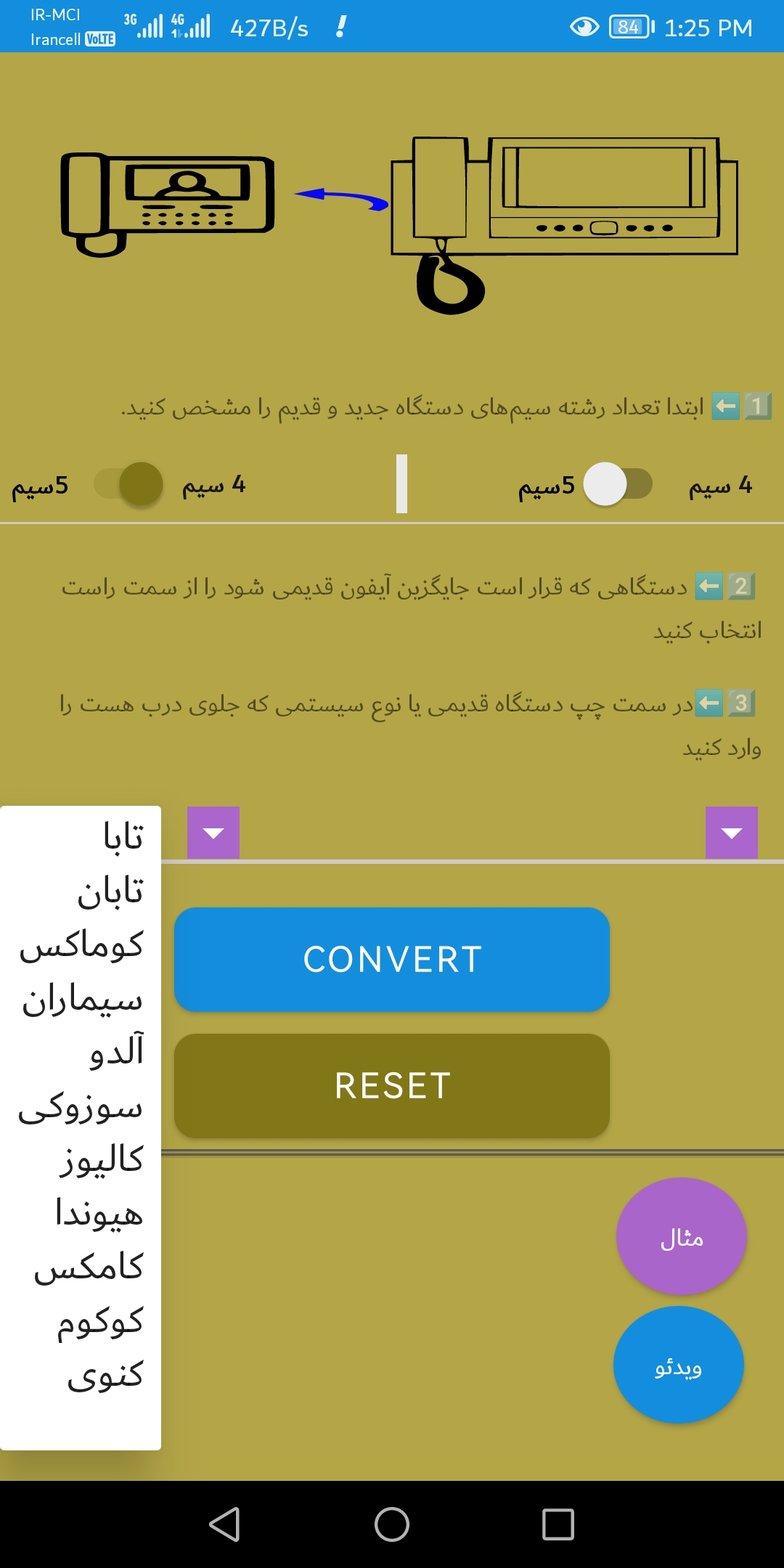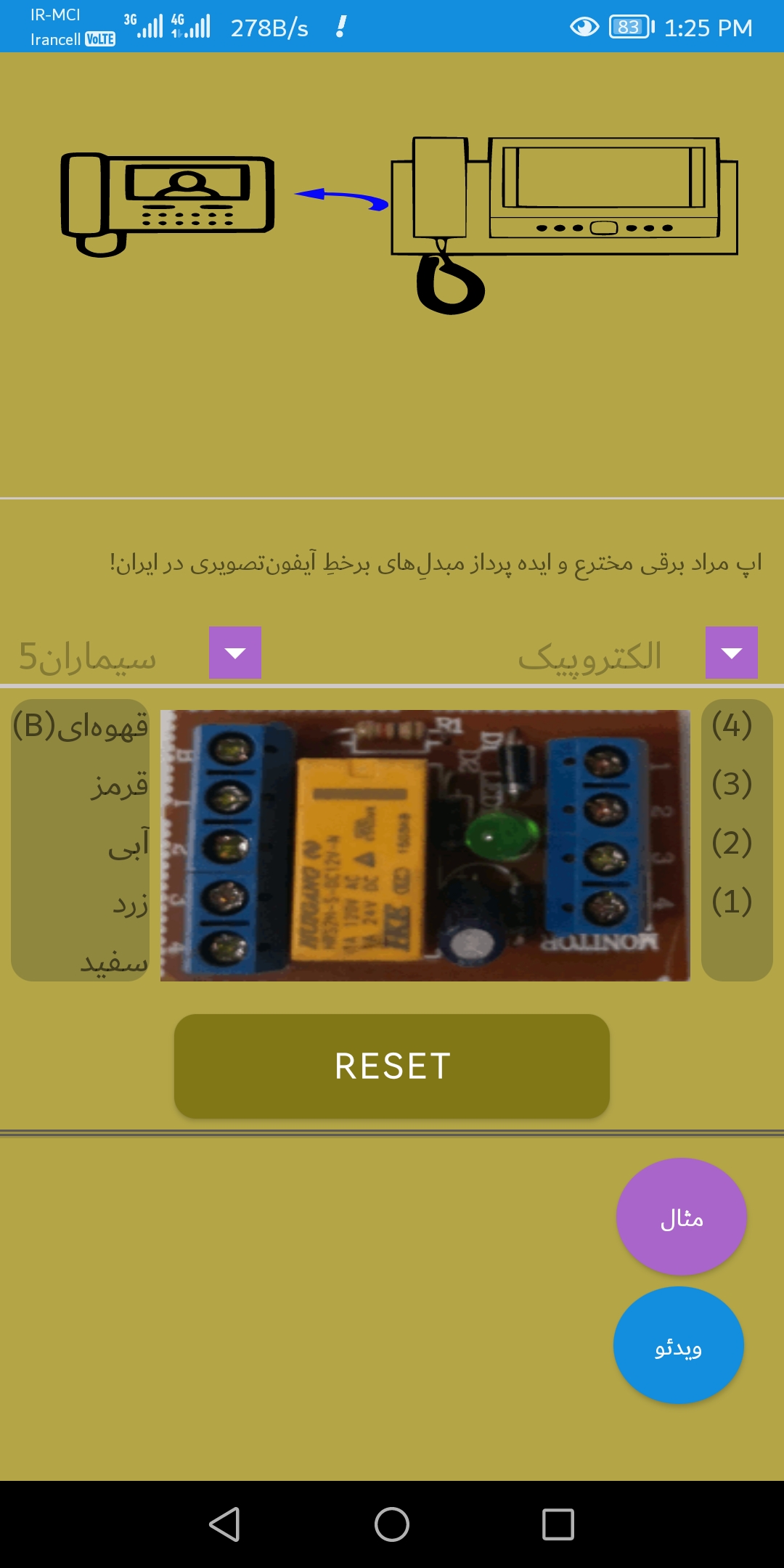Converter Of Video Door Phone(CO_VDP)
Non-physical productRevolutionizing Video Door Phones:
A Handyman's Journey to Innovation As a handyman with 15 years of experience in building electrical services, I've always been driven to find innovative solutions to everyday problems. My latest invention, a unique converter for video door phones, is a testament to this passion. In this article, I'll share my journey from concept to creation, highlighting the challenges I faced and the solutions I found.Video Door Phone:
- are one of the necessities of buildings that transmit sound and image through wires (mainly four) or through WiFi from the front of the door into the house and direct the operation of the return sound and the command of the door opener from the house to the outside. . .- They are examined in terms of price, diversity, security, and some special capabilities, such as transferring all of the above items on the Internet or video memories.
The Problem Statement:
The problem begins when some brands cease production or are no longer used in certain regions, yet their wiring systems and components, such as interfaces and switches, remain present in apartments. As a result, homeowners are now seeking high-quality monitors. Some are looking to upgrade from their old systems, while others want more variety, which was not available in their previous brand. Additionally, some homeowners want to replace only their faulty monitors at the lowest possible cost.The Converter(Design and Development):
I began by researching existing video door phone systems and identifying areas for improvement. I experimented with different materials and designs, testing and refining my ideas until I had a working prototype. The converter I developed is compact, and easy to install.The Android Application:
To complement my converter, I designed an Android application that enables users to support over 15 brands and seamlessly connect two types of wiring systems, including 4-to-4, 4-to-5, 5-to-5, and 5-to-4 wire configurations, without any interference. Moreover, its cost-effectiveness makes it an accessible solution for a broad range of users.Instruction:
We are faced with two approaches in this section:A: The Electrical Approach
All of these devices, with minor differences, follow a single system that can be understood by identifying the overall map for all of them. To achieve this, we need to know the function of each wire or the combination of wires that perform a specific task. This practical task can be accomplished in an electronics laboratory. All I needed was to have the wiring map for each brand, and then use measurement tools to find the voltage matches. Every video door phone sends a 12-volt direct current to the door front, which occurs after the monitor is turned on or by pressing the home button, or through the doorbell trigger. By using a simple voltage tester, we can identify two wires out of four, which is the case for 90% of video door phones with four-wire connections. This voltage is only used to power the street panel, which consists of a sound board and lens. Therefore, if one of these two wires is cut, several functions may be disrupted. After identifying the two wires, we move on to the video and audio wires, which are independent of each other. If we cut any of these wires, it will not affect the other, so we can easily cut each wire to determine which function is disrupted. So far, we have identified four wires. In some devices, the doorbell wire is also connected separately to the monitor, which is the 5-wire configuration that is well-supported by the converter. In essence, all these devices follow the 5-wire wiring system and necessarily require a component called a switch, which separates the individual doorbell units from each other. However, the difference lies in the fact that this component is usually located inside the street panel package and is not visible, and only the 4-wire socket output is seen. Therefore, it appears that the devices operate with 4 wires. Challenge: In some brands, such as Simaran, the switch is located inside the monitor package, so the video door phone converter must be designed to cover this scenario. Therefore, this converter has been designed to support:4-to-4 4-to-5 5-to-5 5-to-4wire configurations, which means that if any package wants to replace another system, this can be done easily by selecting the brand name and wire count.



B: The Algorithm Approach
Regarding the algorithm, I cannot provide complete information on how the converter works. However, I will give you a glimpse: I always start by putting my ideas on paper before implementing them. For example, I say to myself, "I want to convert a Commax phone to a Hyundai phone." Then, I begin implementing a small part of the program and get engaged with the code. In an incredible way, I continuously add branches and leaves to it until I am amazed at how I managed to get everything right. In many cases, I implement the tasks even before building and implementing the algorithm!!! It's astonishing when I have no idea, but I boldly take on the detailed tasks. It's as if when a part of the work is visualized and comes out of my mind, the rest of the path becomes easy.Results and Impact:
This converter is the starting point for creating similar converters for other electrical appliances such as burglar alarms, modular electrical systems, and DVR recorders. The algorithm is based on my experience as a repairman, and I have developed a program that can be used for a wide range of appliances. I am eagerly waiting for any suggestions to create more converters. Due to the lack of patent application options in Iran, I will use the term "innovative product" for my invention. This innovative product was officially registered in the Morad Barghi application on May 20, 2022, and was completed on November 11, 2022. To date, I have not found any similar software in Iran or other parts of the world. If anyone claims to have created a similar product before these dates, I am willing to review their idea documents and make any necessary changes to the intellectual property.Written by Yazdan Ghezelbash